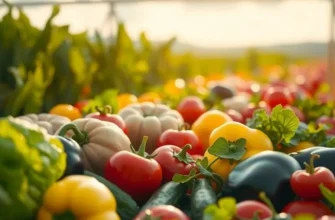Gravy is the luscious sauce that elevates any meal, bringing depth and richness to dishes. Whether it’s for a comforting roast, a savory meat pie, or a hearty vegetable dish, knowing how to create perfect gravy is a valuable skill every home cook should master. This guide will break down the steps for making rich, flavorful gravy that’s sure to impress your family and friends. Get ready to enhance your culinary skills and indulge in the confidence of making gravy from scratch!
Gathering the Essentials for Savory Gravy

Before you begin crafting that perfect batch of gravy, assembling your ingredients and tools is essential. Choosing the right components is the foundation of flavorful, well-balanced gravy.
Fats: The Flavor Builders
The first decision is the choice of fat, which acts as a flavor carrier and texture agent. Traditional gravies often start with the pan drippings left from roasting meats. This provides a rich taste that enhances depth. Keep in mind, the type of meat you use influences the character of the gravy. For example, chicken lend a lighter profile, while beef or pork render boldness.
If you’re crafting a vegetarian version, turn to plant-based fats. Olive oil and coconut oil are popular choices. Butter can be used for a richer, creamy finish, offering a similar effect as meat drippings. Each fat contributes subtly distinct qualities, so don’t hesitate to experiment and find your preference.
Liquids: Achieving Silky Smoothness
For the liquid component, stock or broth is key. If using meat drippings, enhance them with corresponding stock—chicken stock for poultry, beef for red meats. This adds depth and authenticity to the gravy base. Read this guide to learn about proper stock storage and how to reduce waste.
Vegetable stock is excellent for vegetarian gravy, as it keeps the profile savory while maintaining a plant-friendly diet. You might also consider adding a splash of wine or vermouth to elevate the flavors, providing complexity and a touch of acidity.
Seasonings: The Essential Enhancers
Seasonings are the final touch in crafting outstanding gravy. Salt and freshly ground pepper are indispensable, highlighting the other flavors. Herbs such as thyme, sage, and rosemary can impart a savory richness. Add a bay leaf during simmering for a nuanced hint of bitterness that complements richer gravies well.
Vegetarian gravies benefit greatly from umami-rich ingredients like soy sauce or nutritional yeast, which add depth commonly associated with meat-based versions. Carefully balancing these seasonings is crucial; a little increment can turn a good gravy into a superb one.
Pan Drippings or Vegetarian Alternatives
Utilizing pan drippings not only maximizes flavor but also reduces waste. Scrape the brown bits stuck to the pan—these contain intense, concentrated flavors. If you’re leaning toward vegetarian, sautéed mushrooms or caramelized onions make excellent substitutes. Their earthy and sweet notes simulate the savoriness typically derived from meat.
By mindfully assembling these essential elements, you’re on your way to creating a gravy that will leave a lasting impression at any table. Whether opting for traditional or vegetarian, understanding how each ingredient contributes will help you confidently master the art of making gravy.
Steps to Stir Up Perfect Gravy

First, begin with the foundation of your gravy: the roux. A roux is simply equal parts fat and flour cooked together, serving as a thickening agent. In a medium saucepan over low heat, melt butter or your chosen fat. Gradually add the flour while stirring continuously with a whisk. Keep stirring until you achieve a smooth paste and the mixture turns a light golden brown, which typically takes about 3 to 5 minutes. This ensures the raw flour taste cooks out while developing a slight nuttiness.
Once the roux is ready, it’s time to introduce the liquid. Common choices are meat stock, broth, or even plant-based options for those following a plant-focused lifestyle. Slowly pour the liquid into your roux, whisking constantly to prevent lumps. Begin with a quarter of the total liquid, whisking until smooth, then gradually add the rest. This slow addition is crucial for maintaining a silky texture.
As the mixture simmers, focus on achieving the right consistency. The ideal gravy is neither too thick nor too thin. If your gravy appears too thick, gradually whisk in more liquid until you reach your desired consistency. If it’s too thin, a small mixture of flour and cold water, whisked rapidly into the simmering gravy, can thicken it. Remember, patience is key; allow the gravy to simmer gently to prevent scorching.
Flavor balance is another essential element. Taste your gravy frequently throughout the cooking process. Salt and pepper are staples, but consider adding depth with flavor boosters like a splash of wine or balsamic vinegar, which can elevate the profile. Herbs and spices such as rosemary, thyme, or a dash of nutmeg can also complement your main dish perfectly. For a savory umami boost without extra salt, explore alternative seasoning options as detailed in Flavor Boosters Without Salt.
Finally, consider how your gravy pairs with the accompanying dish. A rich, buttery gravy might pair better with roasted meats, while a lighter, herb-infused sauce could complement vegetables or plant-based proteins. Adjust seasoning and consistency as needed to enhance and not overpower the main components of your meal.
Mastery of these steps transforms gravy from mere accompaniment to an essential element that ties your dish together, embodying both flavor and finesse. Once comfortable, experiment with different ingredients and techniques to make your custom gravy a signature part of your culinary repertoire.
Final words
Perfect gravy is within your reach with just a little practice and the right techniques. By understanding the fundamental ingredients and steps required, any home cook can create a rich sauce that enhances meals and impresses guests. Remember, confidence in the kitchen comes from practice and knowledge. Take these tips to heart, experiment with flavors, and soon you’ll be serving up gravies that are not only good but magnificent. Don’t hesitate to make it your own by trying different herbs, spices, or stock variations. With each attempt, you’ll refine your skills and be able to elevate any dish with your expertly crafted gravy!







